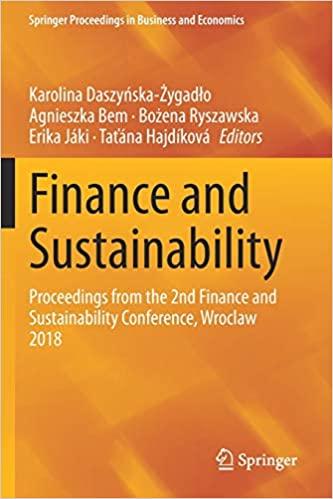Question
For all parts of this question, assume the following: The CAPM holds. The riskless rate of return is 3%. The market portfolio has expected rate
For all parts of this question, assume the following: The CAPM holds. The riskless rate of return is 3%. The market portfolio has expected rate of return of 18% and standard deviation of 20%.
1. KrustyKorp stock has an expected rate of return of 2% per year and standard deviation of 32%. Troy McClure says, No rational person would hold a risky asset expected to return less than the riskless rate! It must be mispriced. Is Troy correct? Explain.
2. Consider the following data on two stocks whose returns are uncorrelated with each other: ( for a & b)
| Beta | E(R) Per Year | Std. Deviation | |
| Shelbyville Shrimp Inc. | 1.40 | 24.00% | 40.00% |
| Capital Crab Inc. | 0.40 | 9.00% | 20.00% |
Elizabeth Hoover has $500 worth of Shelbyville Shrimp stock, $500 worth of Capital Crab stock, and no other investments.
(a) Compute her portfolio beta, expected rate of return (% per year), and standard deviation.
(b) Ms. Hoover says she cannot tolerate any more standard deviation than her portfolio has now. Given this risk tolerance, is she maximizing her expected return? If she is, explain why? If she is not, explain how she should invest to maximize expected return (give a specific trading strategy).
(include work for each problem)
Step by Step Solution
There are 3 Steps involved in it
Step: 1

Get Instant Access to Expert-Tailored Solutions
See step-by-step solutions with expert insights and AI powered tools for academic success
Step: 2

Step: 3

Ace Your Homework with AI
Get the answers you need in no time with our AI-driven, step-by-step assistance
Get Started


